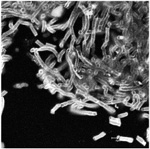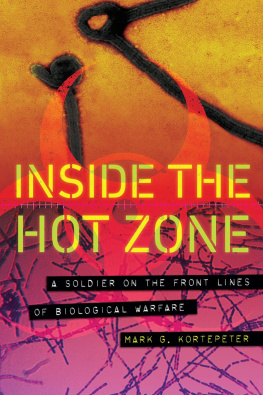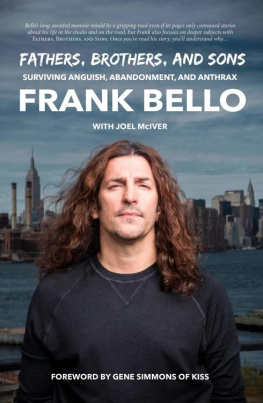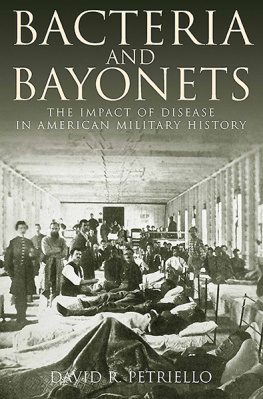DEATH IN A SMALL PACKAGE
JOHNS HOPKINS BIOGRAPHIES OF DISEASE
Charles E. Rosenberg, Series Editor
Randall M. Packard, The Making of a Tropical Disease:
A Short History of Malaria
Steven J. Peitzman, Dropsy, Dialysis, Transplant:
A Short History of Failing Kidneys
David Healy, Mania: A Short History of Bipolar Disorder
Susan D. Jones, Death in a Small Package:
A Short History of Anthrax
DEATH IN A SMALL PACKAGE

A Short History of Anthrax

Susan D. Jones

2010 Susan D. Jones
All rights reserved. Published 2010
Printed in the United States of America on acid-free paper
2 4 6 8 9 7 5 3 1
The Johns Hopkins University Press
2715 North Charles Street
Baltimore, Maryland 21218-4363
www.press.jhu.edu
Library of Congress Cataloging-in-Publication Data
Jones, Susan D., 1964
Death in a small package : a short history of
anthrax / Susan D. Jones.
p. ; cm. (Johns Hopkins biographies of disease)
Includes bibliographical references and index.
ISBN-13: 978-0-8018-9696-5 (hardcover : alk. paper)
ISBN-10: 0-8018-9696-7 (hardcover : alk. paper)
1. AnthraxHistory. 2. Biological weapons
History. I. Title. II. Series: Johns Hopkins
biographies of disease.
[DNLM: 1. Anthraxhistory. 2. Biological warfare agents
history. WC 305 J79d 2010]
QR201.A6J66 2010
616.956dc22 2009052700
A catalog record for this book is available from the British Library.
Special discounts are available for bulk purchases of this book. For more
information, please contact Special Sales at 410-516-6936 or
specialsales@press.jhu.edu.
The Johns Hopkins University Press uses environmentally friendly
book materials, including recycled text paper that is composed of
at least 30 percent post-consumer waste, whenever possible. All of
our book papers are acid-free, and our jackets and covers are
printed on paper with recycled content.
For Phil,
who wrote many books
while I finished this one
But now we come to another kind of war, war waged not against germs but with germs against men, animals, and plantsBW [biological weapons] What distinguishes a potential BW agent from just any germ? Infectivity; casualty effectiveness; availability; resistance; means of transmission; specific immunization; therapy; detection; and retroactivity.
Theodor Rosebury, Peace or Pestilence: Biological Warfare and How to Avoid It, 1949
CONTENTS
Chapter 1. Infectivity and Fear: Charbon and the
Cursed Fields
Chapter 2. Availability: Understanding the
Germ of Anthrax
Chapter 3. Transmission: Anthrax Enters the
Factory
Chapter 4. Casualty Effectiveness: War and
Anthrax
Chapter 5. Resistance: Anthrax, the Modern
Laboratory, and the Environment
Chapter 6. Detection and Verification:
The Weapon and the Disease
FOREWORD
Disease is a fundamental aspect of the human condition. Ancient bones tell us that pathological processes are older than humankinds written records, and sickness and death still confound our generations technological pride. We have not banished pain, disability, or the fear of death, even if we die on average at older ages, of chronic and not acute ills, in hospital or hospice beds and not in our own homes. Disease is something men and women feel. It is experienced in our bodiesbut also in our minds and emotions. Disease demands explanation; we think about it, and we think with it. Why have I become ill? And why now? How is my body different in sickness from its quiet and unobtrusive functioning in health? Why in times of epidemic has a whole community been scourged?
Answers to such timeless questions necessarily mirror and incorporate time- and place-specific ideas, social assumptions, and technological options. In this sense, disease has always been a social and linguistic, a cultural as well as biological, entity. In the Hippocratic era, physiciansand we have always had them with uswere limited to the evidence of their senses in diagnosing a fever, an abnormal discharge, or seizures. Classical notions of the somatic basis for such felt and visible symptoms necessarily reflected and incorporated contemporary philosophical and physiological notions, a speculative world of disordered humors, breath, and pathogenic local environments. Today we can call for understanding on a variety of scientific insights and an armory of diagnostic and therapeutic practicestools that allow us to diagnose ailments unfelt by patients and imperceptible to the doctors senses. In the past century, disease has become increasingly a bureaucratic phenomenon as wellas sickness has been defined and in that sense constituted by formal disease classifications, treatment protocols, and laboratory thresholds.
Sickness is also linked to climatic and geographic factors. How and where we live and how we distribute our resources all contribute to the incidence of disease. For example, ailments such as typhus fever, plague, malaria, dengue, and yellow fever reflect specific environments that we have shared with our insect contemporaries. But humankinds physical circumstances are determined in part by culture, and especially by agricultural practice in the millennia before the growth of cities and industry. The history of anthrax, for example, as readers of this book will see, reflects shifting relationships among animals, soils, and human behaviors. Environment, demography, ideas, and applied medical knowledge all interact to create particular distributions of disease at particular moments in time. The contemporary ecology of sickness in the developed world is marked, for example, by the dominance of chronic and degenerative illnessailments of the cardiovascular system, of the kidneys, and cancer. But this has not always been so.
Disease is thus historically as well as ecologically and biologically specific. Or perhaps I should say that every disease has a unique past. Once discerned and named, every disease claims its own history. At one level, biology creates that idiosyncratic identity. Symptoms and epidemiology as well as generation-specific cultural values and scientific understanding shape responses to illness. Some writers may have romanticized tuberculosisthink of Greta Garbo as Camillebut as the distinguished medical historian Owsei Temkin noted dryly, no one had ever thought to romanticize dysentery. Tuberculosis was pervasive in nineteenth-century Europe and North America and killed far more people than cholera did but never mobilized the same widespread and policy-shifting anxiety as cholera. Unlike tuberculosis, cholera killed quickly and dramatically and was never accepted as a condition of life in Europe and North America. Its episodic visits were anticipated with fear. Sporadic cases of influenza are normally invisible, indistinguishable among a variety of respiratory infections; waves of epidemic flu are all too visible. Syphilis and other sexually transmitted diseases, to cite another example, have had a peculiar and morally inflected attitudinal history. Some diseases, such as smallpox or malaria, have a long history; others, like AIDS, a rather short one. Some have flourished under modern conditions; others seem to reflect the realities of an earlier and economically less developed world.
Next page










